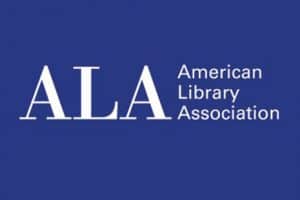
Many libraries initially underestimated demand for glasses, programming, and other services related to the 2017 total solar eclipse.
Librarians hoping to avoid last-minute scrambling to prepare for the upcoming annular (on October 14, 2023) and total solar (on April 8, 2024) eclipses visible in the continental United States attended the session “A Procrastinator’s Guide to the 2023/2024 Solar Eclipses” at the American Library Association’s 2023 Annual Conference and Exhibition in Chicago on June 24.
Members of the Space Science Institute (SSI) National Center for Interactive Learning (NCIL) STAR Library Network (STAR Net) provided an overview of the eclipse-related training, activities, and materials they provide for libraries. Anne Holland, NCIL senior education associate, highlighted STAR Net’s training efforts so far, with 43 workshops already completed. STAR Net is also distributing 5 million eclipse glasses to libraries nationwide. “Don’t worry—we still have glasses left for you,” she promised. Glasses can be requested with a letter from the library’s director.
Stephanie Vierow-Fields, SSI education associate, observed that libraries can often find eager partners in promoting and executing programming. “We should not be doing these programs alone,” she asserted. Excellent candidates for partnerships include museums, community groups, schools, local businesses, and astronomy clubs—although she did warn that astronomy clubs within several hours of the path of totality are likely to be traveling on the day of the eclipse, so librarians should plan programs with them in the weeks before the event.
Brooks Mitchell, education associate for STAR Net, showed off the kits that STAR Net has made available to state libraries for loaning to individual libraries. These kits include gear like a solar telescope, Sunoculars that allow children to safely view the sun, and materials for a storytime and experiment based around the book Moonbear’s Shadow.
Many resources are available without attending a workshop or requesting the loan of any equipment. Claire Ratcliffe Adams, SSI education associate, highlighted STAR Net’s STEM Activity Clearinghouse, a collection of more than 500 eclipse-related activities. STAR Net has also created an online community where librarians can discuss and collaborate on eclipse-related programming. Other useful sites include greatamericaneclipse.com, which provides maps and schedules for the eclipses; NASA’s Solar System Ambassadors program; and general astronomy sources like the Night Sky Network.
And while the sheer quantity of interest in all things eclipse may be overwhelming at times, it’s hardly surprising. The sun is a constant and critical component for all life on earth. As James Harold, NCIL acting director, observed: “We are all solar powered. Every society in the world has stories about eclipses.”


